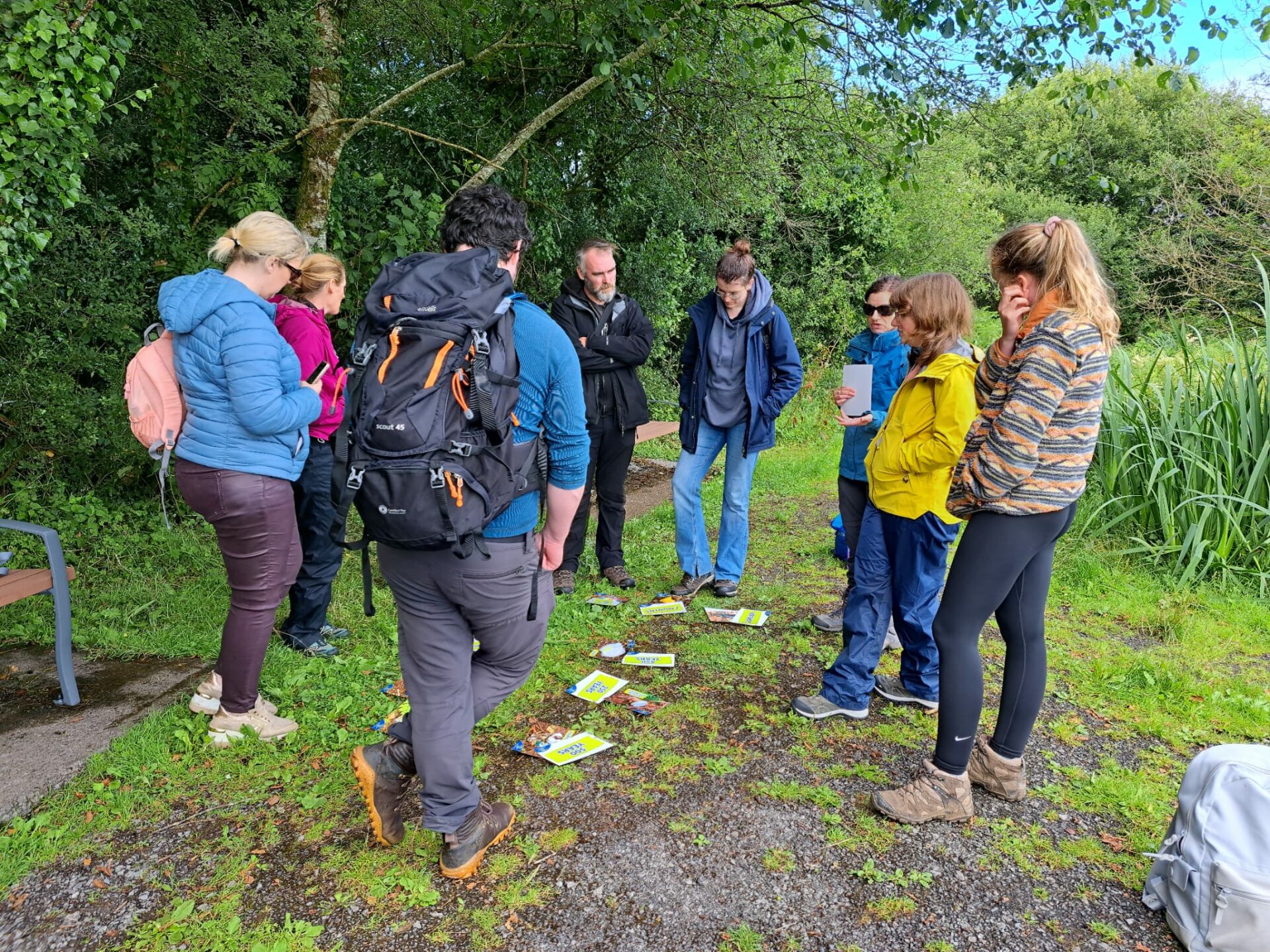PRESS RELEASE: LEAVE NO TRACE IRELAND TO COLLABORATE WITH GALWAY CITY COUNCIL ON BARNA WOODS PROJECT
Raising public awareness of future management of woods key elements of partnership
Monday 10th July 2023: Leave No Trace Ireland has partnered with Galway City Council to raise awareness of the Barna Woods Management and Regeneration Project, to highlight the need for care and respect for this unique city woodland. Barna Woods, located on the western edge of the city, is close to the highly populated Knocknacarra suburb and is owned and managed by Galway City Council.
As part of its programme with Galway City Council, Leave No Trace Ireland, is engaging with local stakeholders, and the wider public to raise awareness on the key actions being undertaken for biodiversity and the woodland’s long-term, sustainable management.
Leave No Trace Ireland has issued a stakeholder survey to elicit individuals’ connection to Barna, what they believe the main issues to be and what actions they feel would benefit the woodland. These responses will be collated and used to inform future work.
Leave No Trace Ireland has also delivered three awareness courses at Barna Woods with members of local community including Friends of Barna Woods and Barna Tidy Towns, as well as Galway City Council staff.
Commenting on the partnership with Galway City Council, Leave No Trace Ireland CEO Maura Kiely said:
“Leave No Trace is excited to be working with Galway City Council to raise awareness of Barna Woods as a unique and biologically valuable resource on the doorstep of Galway City. Barna Woods and associated woodland habitats is a considerable wildlife resource and contains over 100 plant species including a small section of priority annexed woodland habitat under the EU Habitats Directive. We are looking forward to getting the feedback from local stakeholders so that together with GCC we can further enhance and protect this hugely valuable public amenity both for the people of Galway and visitors.”
“We also want to raise public awareness of the need to care for and respect this beautiful woodland in line with the overall Leave No Trace Principles to ‘Love This Place, Leave No Trace”.
Barna Woods Management and Regeneration Project, Galway City Council in conjunction with stakeholders is evaluating a number of key sustainable interventions to protect the wood’s biodiversity, improve the ecological quality of the woodland habitats and ensure its long-term sustainable management. These include:
- Scarification of woodland soils
This light scarification will stimulate the natural regeneration of tree, shrub and ground flora species and reduce the cover of Briar and Ivy which may be suppressing natural regeneration.
- Establishment of native tree and shrub species in small woodland openings
Over the past ten years Ash dieback disease has resulted in the creation of small gaps in the woodland canopy and the disease is progressing. Small groups of native saplings will be planted, and the natural regeneration of native shrubs will be facilitated in these openings and competing vegetation. In areas of the wood where gaps caused by the death of Ash are uncommon, the woodland canopy will be opened up slightly by the targeted pruning of tree limbs to allow increased light levels to the reach the forest floor.
- Waymarking of trails within the woodland
To manage trampling pressure on the woodland, a number of existing, non-official, walking paths will be formalized. Paths will be signposted using signage which will include small information boards encouraging visitors to keep to designated paths in order to alleviate pressure on the woodland habitat.
- Control of non-native plant species
While invasive species have a relatively restricted distribution within the wood and not considered to be a serious problem these species should be regularly monitored and removed/treated where necessary. The main species noted in previous surveys include Japanese knotweed, Cherry laurel, Montbretia, Pendulous sedge and Winter heliotrope. In addition, any naturally regenerating Sycamore saplings will be where they are considered to be invasive.
Paula Kearney, Biodiversity Officer of Galway City Council said:
“We know from previous work undertaken by Galway City Council that Barna Wood has in incredibly rich biodiversity of habitats and vegetation, invertebrates, bats, birds, mammals and macrofungi, within the wood. Working with Leave No Trace we want to share with the public information about all these aspects of the woods that make it such a special place. We are keen to hear stakeholder and public feedback on how we can better sustainably manage and protect the woods into the future.”
Ends
Media Contacts: Derek Cunningham 086-2430535 [email protected] Jim Devlin 0872631057 [email protected]
Notes to Editors:
Leave No Trace Ireland is Ireland’s only outdoor ethics programme, which promotes the responsible use of the outdoors. Through education, research and partnerships, Leave No Trace Ireland enables and supports individuals, communities, organisations and companies in reducing the environmental impact of outdoor activities.
Galway City Council is the local authority in the city of Galway, Ireland. As a city council, it is governed by the Local Government Act 2001. The council is responsible for housing and community, roads and transportation, urban planning and development, amenity and culture, and environment.
Further Information on Barna Woods:
Barna Woods is located on the western edge of the city, close to the highly populated Knocknacarra suburb, and is owned and managed by Galway City Council. The woodland is part of a wider recreational amenity that includes Cappagh Park and provides a valuable amenity resource for the residents of the surrounding areas as well as visitors to the region.
The Woods has a particularly high ecological value because it is linked to other habitats of high conservation importance on an international scale, as part of the Galway Bay Complex
The wood is classified as mixed broadleaved and non-native species such as beech and sycamore are widespread and were probably planted as part of the Barna Demesne. Oak is also frequent throughout.
The wood has some interesting archaeological features such as a holy well and mass rock as well as undocumented reports of shell middens and a fulacht fiadh. Old field boundaries are also present within the wood.
This project is supported by the National Parks & Wildlife Service under the National Biodiversity Action plan (2017-2021) https://biodiversity.heritage.gov.ie/ and Galway City Council support funding.



